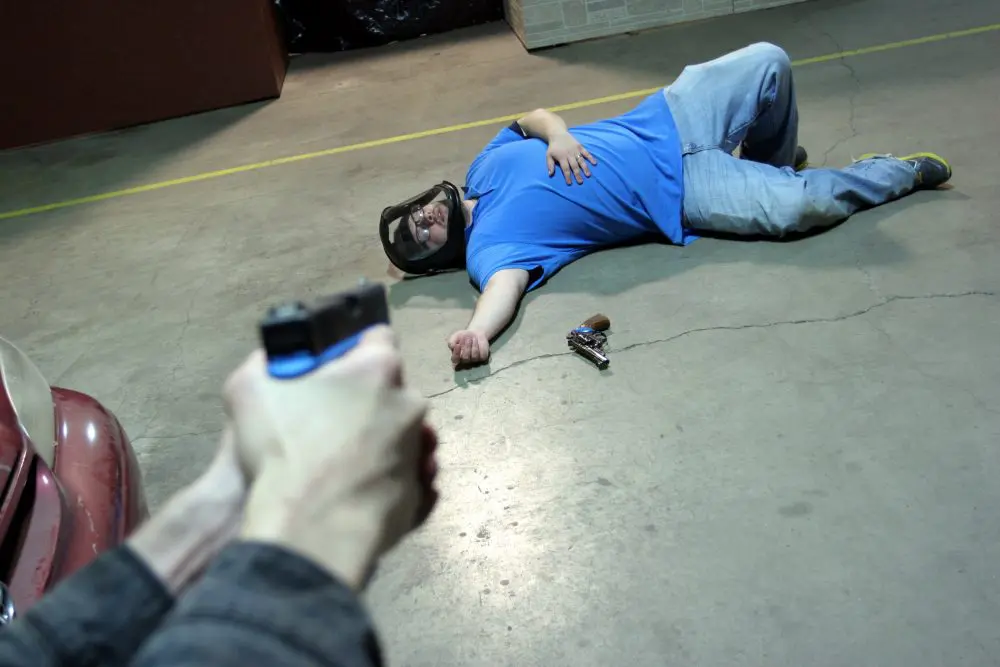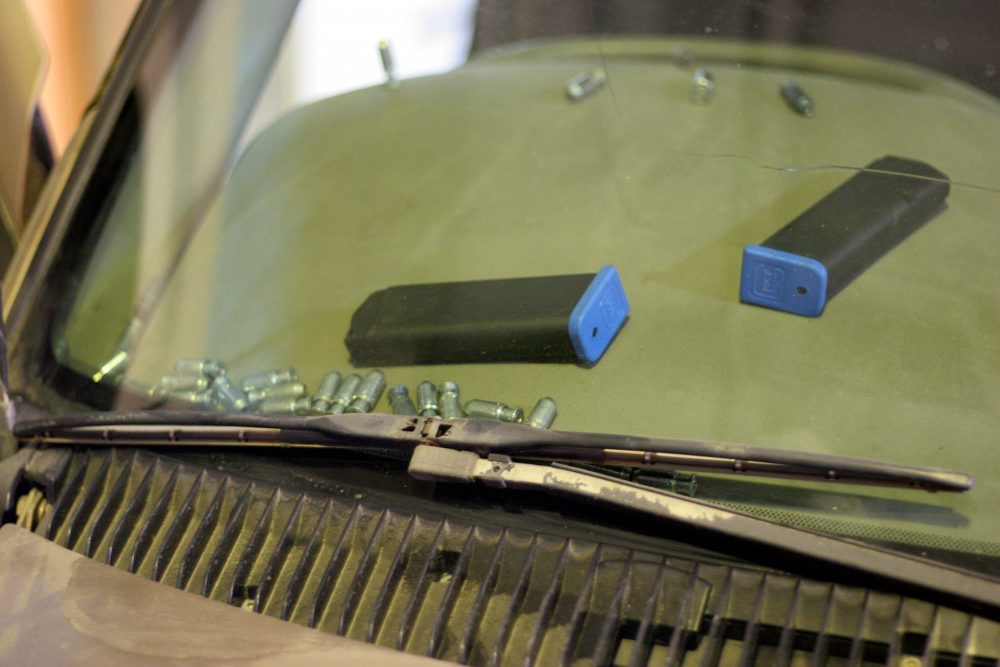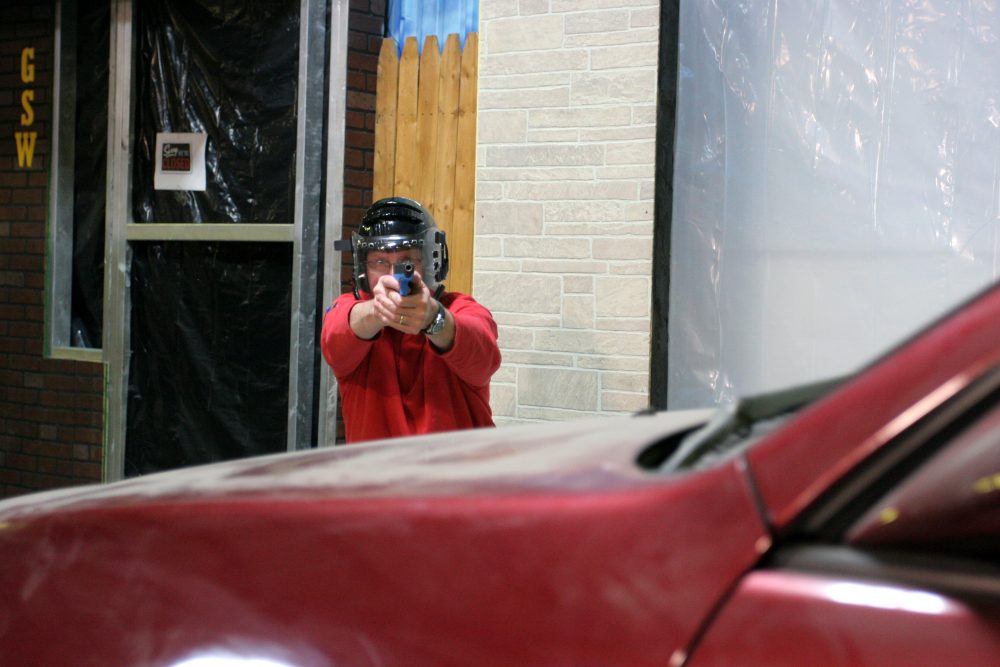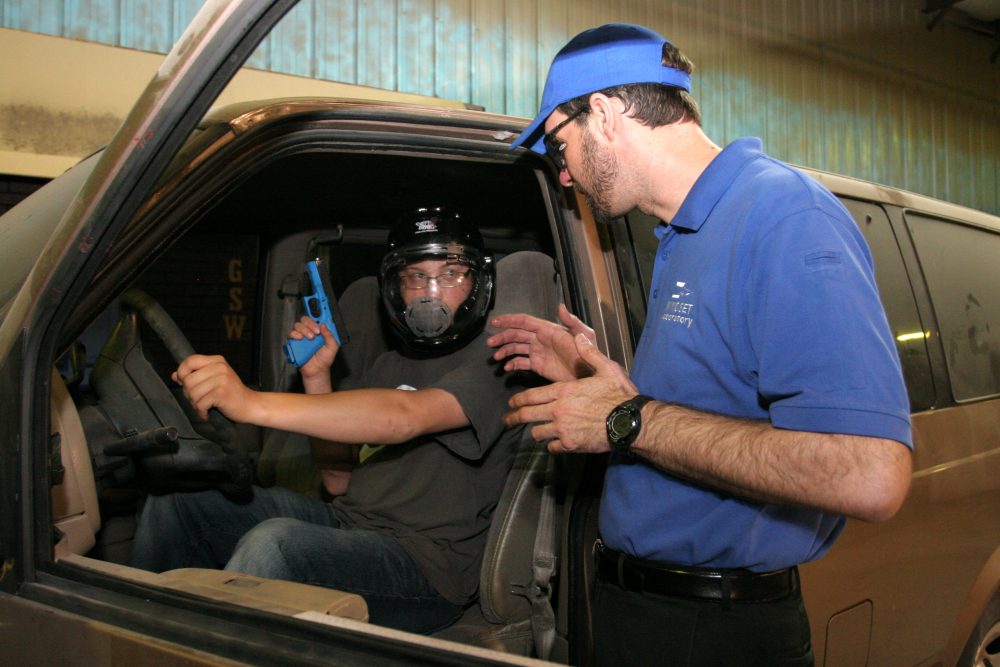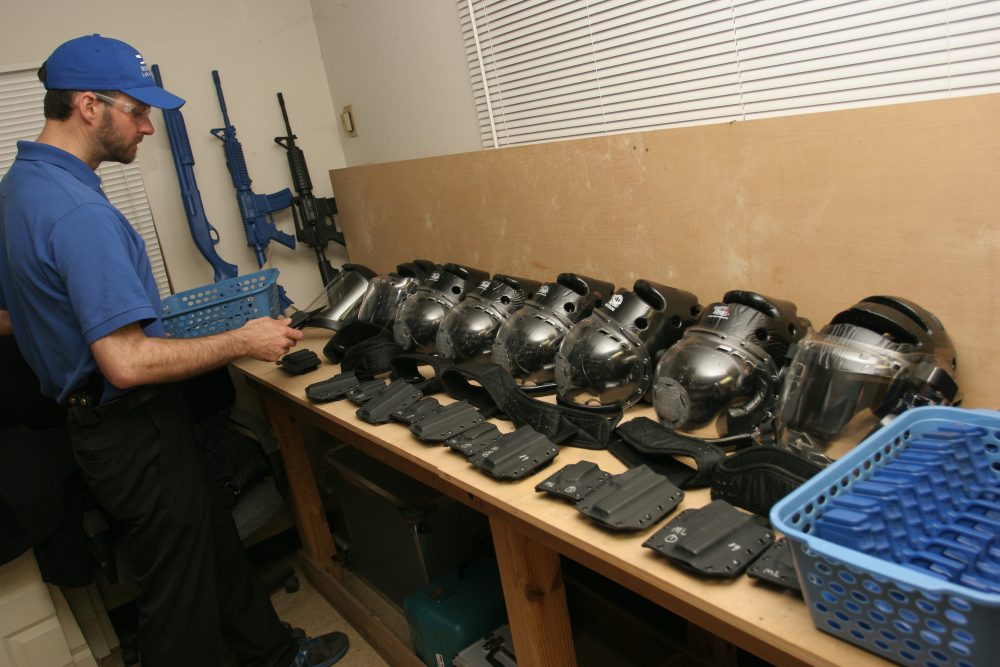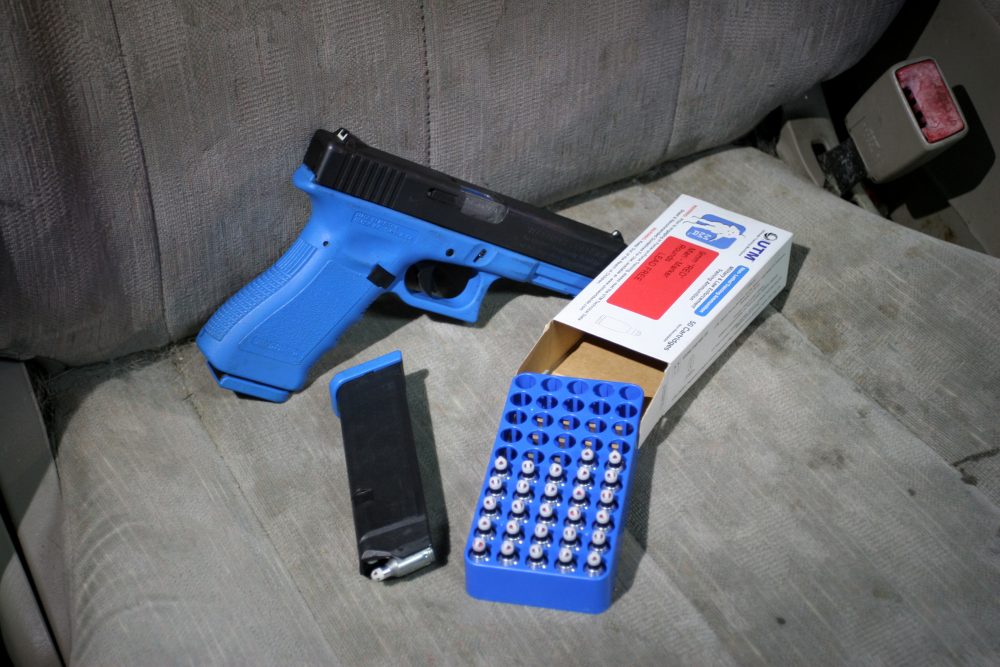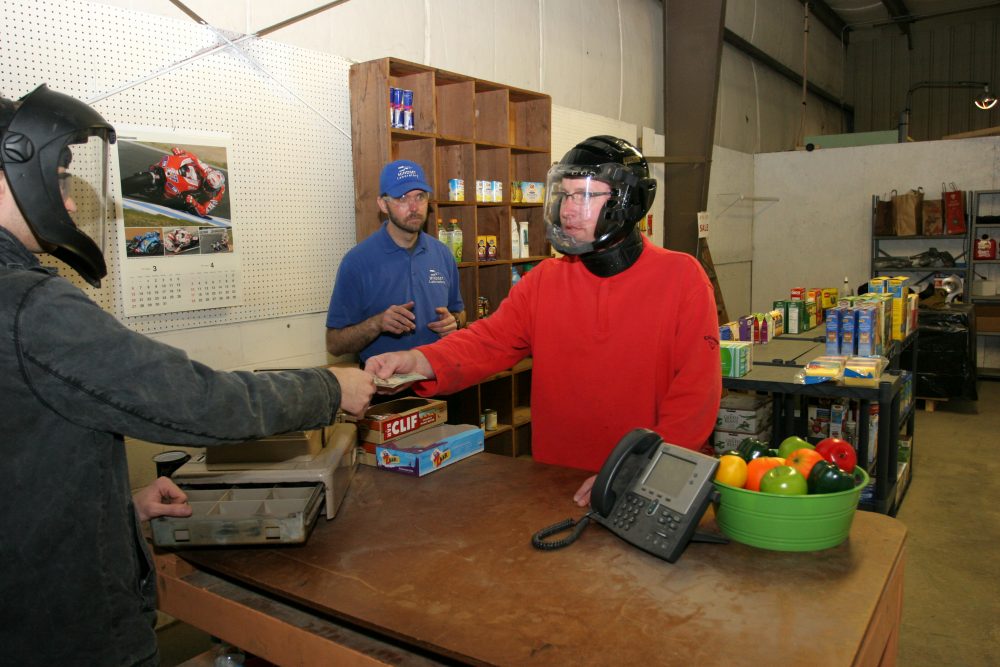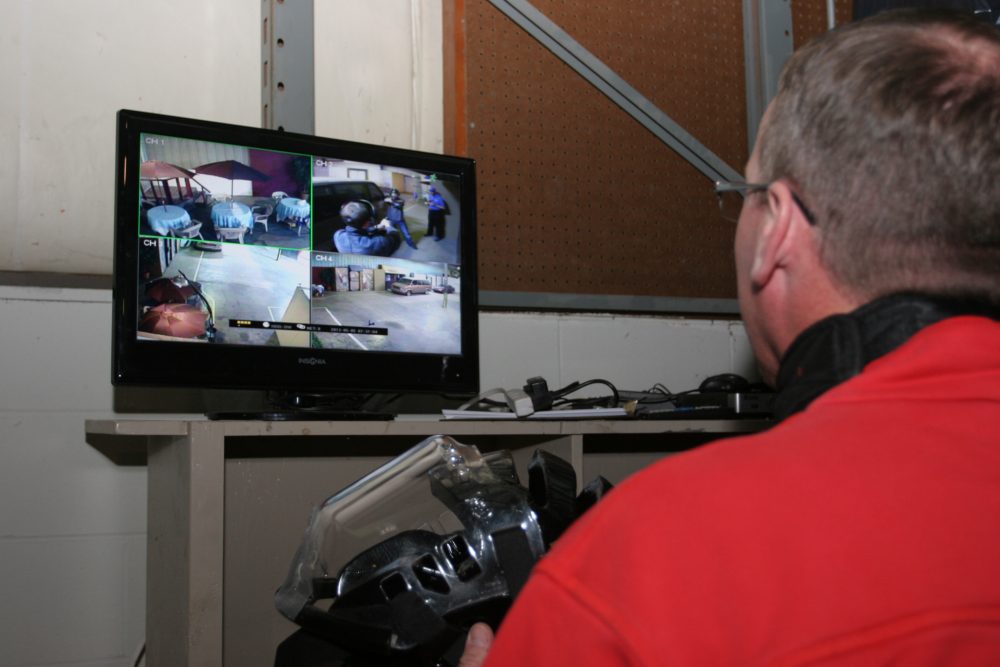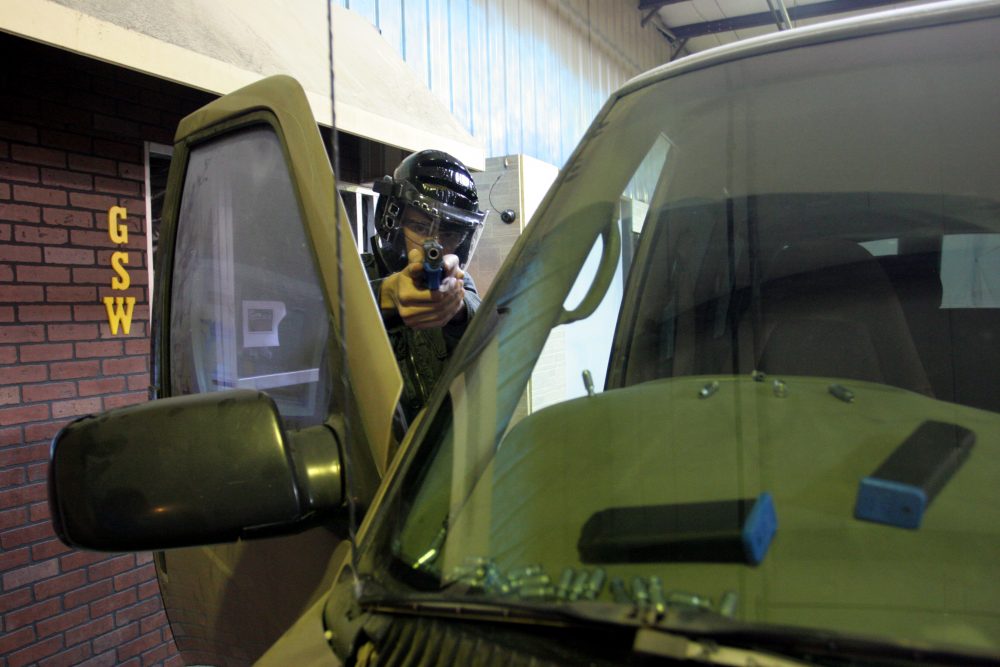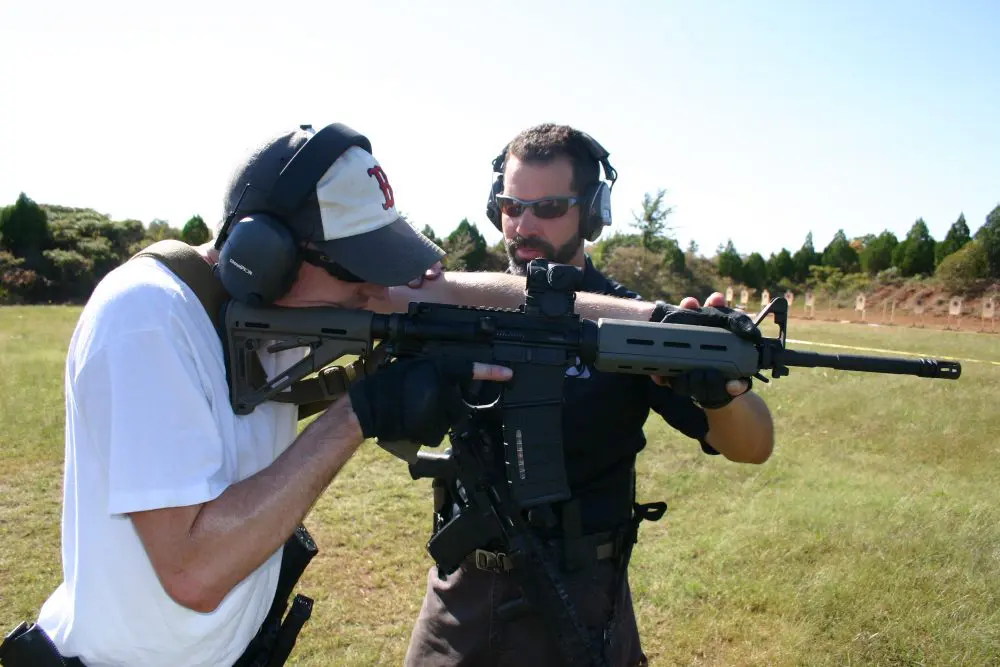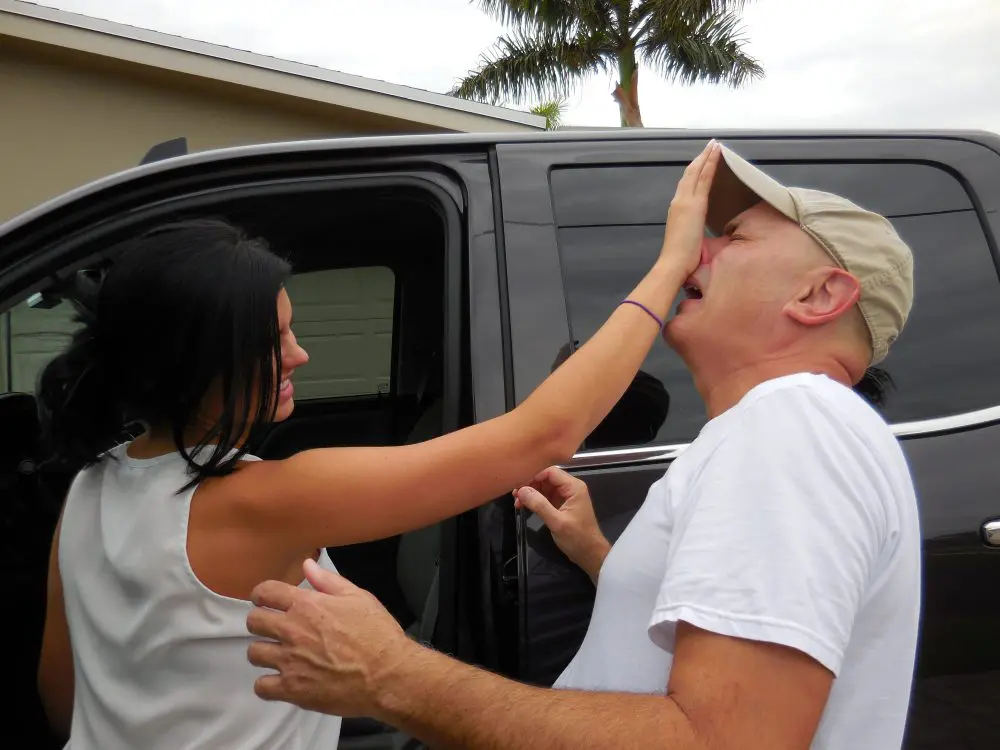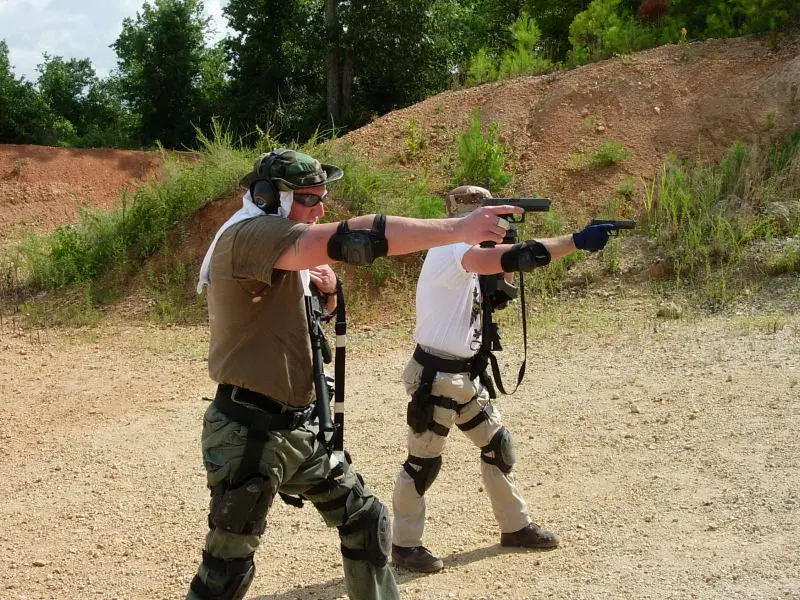Mark one for the good guys. Role player down.
At one time or another, we’ve all employed the phrase, “all of a sudden” when referring to a traumatic experience.
What we generally mean is that one second everything was fine, and the next second something occurred more rapidly than we thought possible. More often than not, the result is a very bad situation.
Driving through Pleasantville is mostly a bad thing.
Pleasantville is one of the most violent places on earth. People are carjacked, robbed and stabbed multiple times every day. Gunfire erupts several times every hour. I spent a day there recently. I came through it, but not unscathed. No one gets out of Pleasantville unscathed.
Table of Contents
MINDSET LABORATORY
Pleasantville is the mock town used in force-on-force training scenarios of Mindset Laboratory, the brainchild of Shay Van Vlymen. Mindset Lab was created several years ago to fill the void left by much of the tactical firearms industry: practical force-on-force scenario-based training.
Drills on a square range, while essential, fail at some level when it comes to stress-induced live-fire situations requiring you to prioritize many necessities at once. These include shooting the bad guy, exiting a vehicle, reloading, applying a makeshift tourniquet, calling 911, re-engaging additional threats, and seeking better cover.
Results of another contact in Pleasantville.
A solid scenario is the crucible that reveals just how your square range training holds up to the real world. Mindset Lab excels at forcing you to use the ultimate weapon—your brain.
Mindset Lab is located in a large warehouse near several interstates in Indianapolis. Being inside means no weather issues and complete control of the environment, be it sound, lack of light, etc.
Shay has constructed a town with multiple buildings, a convenience store, an ATM, and even a coffee shop with outdoor seating. In a separate section of the warehouse is a break room where lectures are taught and students eat lunch and wait for the next exercise. All in all, it’s a very comfortable training location.
Mindset Lab has a variety of scenario-based offerings. Everyone starts in their Intro to Force-on-Force class. Once that prerequisite has been completed, students can take any of their other courses.
Student acquires good sight picture during robbery.
VEHICLE FORCE-ON-FORCE CLASS
I recently completed their one-day Vehicle Force-On-Force class. Due to the nature of my law enforcement work, I spend a significant amount of time operating in and around vehicles. There is a certain confining aspect to a vehicle that necessitates a different approach to weapon handling skills.
The simple act of drawing a handgun on a square range becomes more complicated in a seated position, behind the wheel, with both a cover garment and a seatbelt hindering access to your weapon.
If you’ve never done this before, it’s well worth trying to do it smoothly and safely under stress.
The day started out with the usual paperwork, introductions and squaring up of tuition. Then came the lecture portion of the class. Having attended literally thousands of hours of training, I was not anticipating too much new here. I was wrong.
Shay lived up to his company’s name and provided a well-structured framework on developing proper mindset. Most of the other students also had a lot of training under their belts, but I noticed many of them taking notes at various points.
Mindset Lab’s owner Shay Van Vlymen gives instruction before a scenario.
SERIOUS BUT SAFE
All the instructors at Mindset Lab approach the training seriously. This is not some cheesy paintball-esque game as I had feared. Force-on-force always has the potential of turning into nothing more than trading inconsequential simulated rounds, while reality—and training value—go out the window.
Things are different at Mindset Lab. This training could literally mean the difference between life and death for a student. The instructors appreciate this and operate understanding the full gravity of their responsibility. With this in mind, various safety checks were performed first.
Students were thoroughly searched to make sure no live weapons were brought into the training site. Proper equipment was then issued. Mindset Lab uses the Glock 17T firing the UTM round, which necessitates protective eye, neck and headgear. Students were encouraged to bring their own holsters and mag pouches, but extra were on hand for anyone who didn’t have a holster or mag pouch fitting a Glock 17. Students were also issued inoperable cellphones similar to the cellphone they carry daily. This is a critical portion of the training, and one often overlooked in tactical courses.
Shay Van Vlymen organizes gear prior to class.
Shay provided some basic instruction on proper weapon handling in and around a vehicle. Careful consideration was given to muzzle discipline. Letting a muzzle take a short cut across your femoral arteries when shooting out the window may end up doing the bad guy’s work for him.
Students got several repetitions of drawing their handguns from seated positions and around seat belts and cover garments. While not anywhere near enough reps to develop muscle memory, it was an appropriate level of instruction to cause a student to recognize what he or she needs to practice later.
Each student was given an opportunity to engage an attacker from a seated position in a non-stressful scenario. Everyone rotated through each position, which meant everyone was both on the giving and receiving ends (As I type this a few days later, I have two free souvenirs on my chest in the form of very respectable double taps from a fellow student).
Weapon of choice in Pleasantville: G17T with UTMs.
AT WARP SPEED
After we had worked out some of what we thought we would do in a given scenario, we quickly moved into what we actually did. Sometimes it was an ego check. Things don’t always go pleasantly in Pleasantville.
I won’t go into the specifics of the scenarios for obvious reasons, but I will say these are not traditional “test one aspect” drills. The scenarios are complex in that they require accomplishing different tasks at different times.
While I felt I needed to accomplish many things simultaneously, I obviously could not. Tunnel vision set in, the stress level rising with the adrenaline dump and, in addition to the gun battle, a separate internal sub-battle developed as the brain tried to focus on priorities.
Sometimes I handled the decision-making adequately. Other times the proper decision seemed to come to me only after the stress of the scenario was over and I was completing my after-action report. To me, this is the true genius of the Mindset Lab course: forcing students to run through the proper decision-making process at warp-speed.
Trouble in Pleasantville’s General Store.
AAR PLUS
One of my complaints over the years with force-on-force training has been the lack of analysis after the exercise. I have often proceeded immediately from one scenario directly into another, with a debrief at the end of that portion of the class. What inevitably happens is that scenarios run together. Lessons learned in one scenario are lost in the stress of the next, and the scenarios themselves even start to run together. Mindset Lab takes a refreshingly different approach to prevent this.
After each scenario, the instructors went through a verbal checklist of questions with the student. Sometimes this included a physical walkthrough of what actually had been done, and sometimes it was just a short chat about what had occurred. This is not a one-way street.
Instructors dug out the student’s thinking behind his actions and together they conversed about what could have been done better. Ample time was provided for each student to really understand what happened in the scenario, what he did and what he could have done better or differently. A very profitable technique. But the debrief didn’t end there.
Student observes others via CCTV.
Next, you moved to a table away from the scenario and, while the next student was going through their scenario, you sat and calmly filled out your After Action Report for your particular exercise. The form had concise questions about how you reacted, what you learned, what you need to work on, etc.
These forms became invaluable as they created a catalog of your performance in various training scenarios and a great resource to draw upon later as you develop training drills to work on deficiencies. It also required you to justify why your particular approach to tactical problems was valid.
After that, each student had the opportunity to watch another student on Mindset Lab’s newly installed CCTV. At this point, the student’s heart rate was back to normal and he could fully comprehend the details of the situation while observing an entire scenario from a bird’s eye view.
In most classes, the learning is pretty much over once the drill ends. At Mindset Lab, that’s where the real learning begins. I greatly appreciated this and feel that most true students of tactical operations will as well.
Student engages after exiting vehicle.
Force-on-force is quickly becoming the next fad in tactical training. But it is not just a fad, it is the natural progression in the training evolution. I love slinging lead downrange as much as the next guy, but when it comes to the most efficient (and cost-effective) way to learn, my vote goes to force-on-force.
Mindset Lab does a first-rate job at this type of training.
Chris Barfield is an 18-year law enforcement veteran of both State and Federal agencies and spends a good deal of his current assignment training police and military overseas.
SOURCE:
Mindset Laboratory
www.mindsetlab.com
